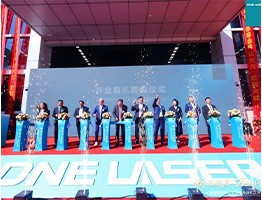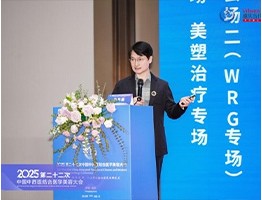China's manufacturing Purchasing Managers' Index fell to 49.7 in December, falling below 5
source:Laserfair
release:Nick
keywords: PMI manufacturing
Time:2019-01-10
Chinese manufacturing continued to slow down in the last month of 2018. China's manufacturing PMI fell below 50, the first time since May 2017. Among them, the new order index entered the contraction interval for the first time in 30 months, indicating that domestic demand also weakened significantly while external demand was weak. The desire of the entire manufacturing industry to reduce inventory will increase, and the Chinese economy will face greater downward pressure in 2019.
According to Reuters, the seasonally adjusted December China Manufacturing Purchasing Managers Index (PMI) fell to 49.7, the first time since May 2017 that it fell below the line. The Reuters survey estimated a median of 50.1, compared to 50.2 last month.
“Overall, domestic demand in China’s manufacturing sector has weakened and foreign demand has weakened in December,” said Zhong Zhengsheng, head of macro research at Caixin Insight Tank Monita. The desire to destock in the enterprise has increased and the price of industrial products has fallen – this may further drag down production, and the Chinese economy appears to face greater downward pressure.
The sub-entry data showed that the new order index fell below 50, the first time since June 2016, reflecting a decline in manufacturing demand. The new export order index rebounded slightly in December, but it is still in the contraction zone, indicating that external demand is still sluggish due to Sino-US trade friction, while domestic demand slowdown is more significant.
The output index rose slightly above 50, but it is still close to the lowest level in three years. The weakening of demand may gradually become more obvious to the production.
In terms of inventory, the finished goods inventory index remained above 50, the chain fell, and the purchasing inventory index contracted for the first time in half a year, which may affect the stability of manufacturing production in the future.
The Supplier Delivery Time Index exceeded 50 for the first time since August 2016, meaning that the manufacturer's cash flow has improved. This may benefit from the government's support policy for the financing needs of SMEs, and the State Council requires government departments and large enterprises not to default on the amount of SMEs.
In terms of price, both the input and ex-factory price indices fell to their lowest level since February 2016, with the former falling below 50 for the first time in 19 months. This is in line with the slowdown in the domestic commodity market and the fall in oil prices. The year-on-year increase in PPI (Producer Price Index) may accelerate the downward trend.
 4th Collaboration! What Brought the Global Laser Academic Guru to Chinese Univs & Leading Firms?
4th Collaboration! What Brought the Global Laser Academic Guru to Chinese Univs & Leading Firms? DNE Laser Foshan Smart Manufacturing Base Grand Opening: New Brand Image Starts New Journey
DNE Laser Foshan Smart Manufacturing Base Grand Opening: New Brand Image Starts New Journey Live: DMP GBA Expo – Laser Hard Tech Leads Industrial Smart Manufacturing New Wave
Live: DMP GBA Expo – Laser Hard Tech Leads Industrial Smart Manufacturing New Wave Scientists Develop Palm-sized Short-pulse Laser System: Efficiency Increased to 80%
Scientists Develop Palm-sized Short-pulse Laser System: Efficiency Increased to 80% Global LiDAR Giants Engage in Escalating Patent Wars
Global LiDAR Giants Engage in Escalating Patent Wars
 Shi Lei (Hipa Tech): Focus on Domestic Substitution, Future Layout in High-End Laser Micromachining
Shi Lei (Hipa Tech): Focus on Domestic Substitution, Future Layout in High-End Laser Micromachining Optizone Technology: 17 Years Devoted to Optics – High-Power Optics Mass-Production Pioneer
Optizone Technology: 17 Years Devoted to Optics – High-Power Optics Mass-Production Pioneer Zhuojie Laser: Breaking barriers via tech breakthroughs, aiming to lead high-end light sources
Zhuojie Laser: Breaking barriers via tech breakthroughs, aiming to lead high-end light sources Dr. Sun Linchao: Pioneer and Leader in China's Field of Medical Aesthetic Laser Therapy
Dr. Sun Linchao: Pioneer and Leader in China's Field of Medical Aesthetic Laser Therapy Guo Guangcan, CAS Academician & USTC Professor: Four Decades Chasing Quantum "Light"
more>>
Guo Guangcan, CAS Academician & USTC Professor: Four Decades Chasing Quantum "Light"
more>>
